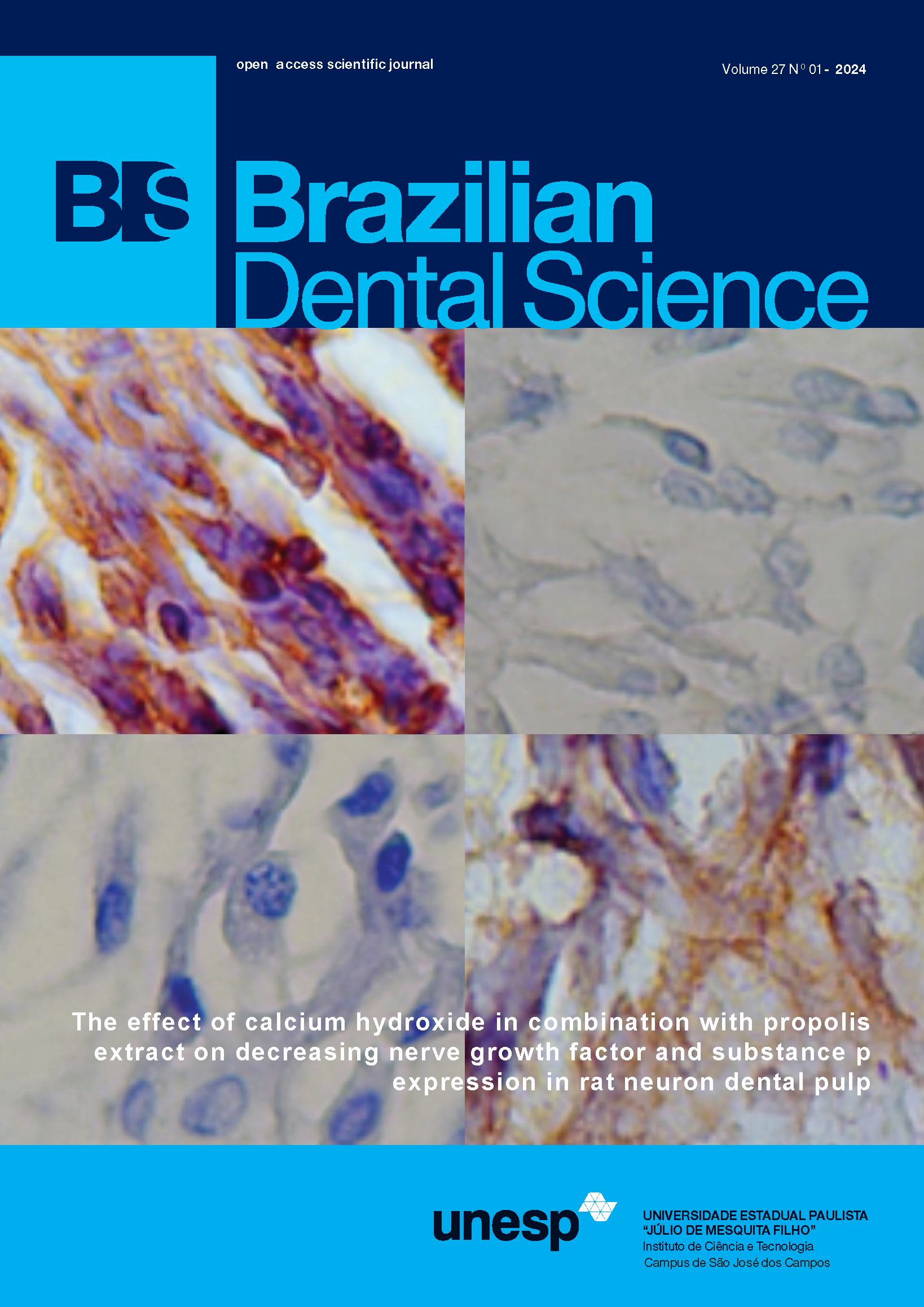Effect of Hamamelis virginiana, Persea americana, Cynara scolymus L and Stryphnodendron barbatiman M plant extracts on the phenotypic expression of virulence factors in biofilms of the Candida albicans
DOI:
https://doi.org/10.4322/bds.2024.e4039Abstract
Objective: Analyze the phenotypic expression of virulence factors in Candida albicans biofilms against plant glycolic extracts. Material and Methods: The biofilms of Candida albicans (ATCC 18804) obtained from incubation for 48 hours were exposed for 5 minutes and 24 hours to different concentrations of glycolic extracts of Hamamelis virginiana and Persea americana, Cynara scolymus L and Stryphnodendron barbatiman M, in order to verify the antifungal activity of the proteinase, phospholipase and hemolysin. Results: All extracts were effective in reducing biofilm. In contact for 5 minutes. the extracts reduced 50% of the biofilm. After 24 hours, the Persea americana extract showed the biofilm at 90%, followed by Cynara scolymus, which interrupted it at 85%, There was a change in proteinase intensity after 5 minutes and 24 hours. with an average enzymatic activity of 0.69 compared to the control of 0.49. Cynara scolymus was the extract with the highest mean concentration of 100 mg/ml; the phospholipase intensity was changed with Stryphnodendron barbatiman being more effective in 24 hours compared to the control (p< 0.0001). The hemolysin secretion was modified by Hamamelis virginiana (12.5 mg/ml) after 5 minutes of exposure, and in 24 hours. all extracts were capable to cause changes in secretion. Conclusion: The tested extracts have antifungal potential in Candida albicans biofilms, implying a significant reduction in virulence factors. Thus, these can be indicated as an alternative therapeutic tool to reduce the morbidity of these infections, as in both investigated exposure times. they were able to reduce the enzymatic secretion of the fungus.
KEYWORDS
Antifungal agents; Candida albicans; Infection; Plant extracts; Virulence factors.
Downloads
Published
How to Cite
Issue
Section
License
Brazilian Dental Science uses the Creative Commons (CC-BY 4.0) license, thus preserving the integrity of articles in an open access environment. The journal allows the author to retain publishing rights without restrictions.
=================




























